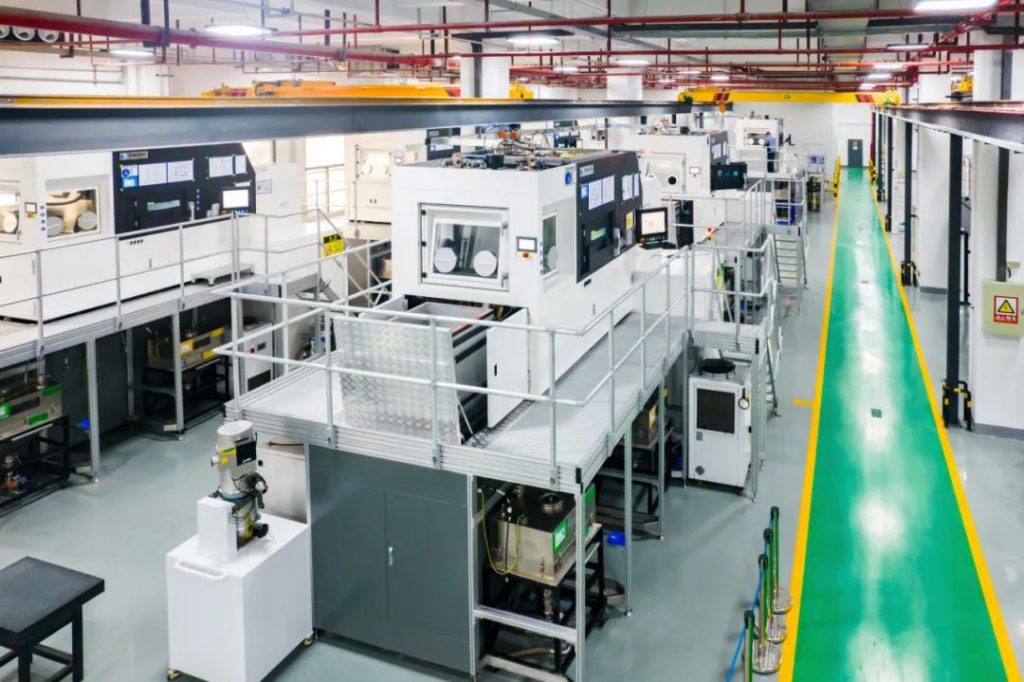Last week, Farsoon Technologies announced that the company had released three new large-platform machines, all of which build upon the company’s successful FS621M laser powder bed fusion (PBF) system for metal additive manufacturing (AM). Yesterday, Farsoon announced that it has joined the AM/sintering industry association, ColdMetalFusion Alliance, an organization which was started this year by the originator of cold metal fusion (CMF) AM, Germany’s Headmade Materials.
The major advantage to CMF is that it allows users to transform selective laser sintering (SLS) systems designed for polymers into metal AM platforms. In a 2021 interview with 3DPrint.com’s Joris Peels, Headmade’s CEO, Christian Staudigel, summed it up like this: “…[CMF] combines the worlds of 3D-printing for plastics (SLS) with the standard powder metallurgical processes for debinding and sintering…[Uniquely,] these two worlds are connected to each other solely by our feedstock material without the need for any process or machine adjustments.”

At next month’s Formnext 2022 (November 15-18), in Frankfurt, Germany, Farsoon will explain how it plans to tailor its SLS machines into CMF platforms, at booth D29, in hall 11.1. Also, attendees can visit ColdMetalFusion’s booth, D48, which is also in hall 11.1.
As the applications that are optimal for CMF seem to overlap mostly with those which are optimal for metal binder jetting (MBJ), it doesn’t seem like an overstatement to call this a shot across the bow for American MBJ ambitions. In a press release announcing Farsoon’s joining of the ColdMetalFusion Alliance, the managing director of Farsoon Europe, Dr. Dirk Simon, claimed that the company had accomplished no less than the opening up of “an entirely new sub-market within the metal-AM landscape”.
Dr. Simon continued, “Farsoon uniquely combines both laser and mechanical engineering expertise with customer-centric solutions instead of off-the-shelf systems. This new application of laser sintering will help to make [AM] series production possible in an economic manner via a lower CAPEX, as companies can use their existing machinery. …We are industrialists by heritage and as such share many values such as trust, reliability and innovation with the other ColdMetalFusion members. This shared culture is one of the reasons why we have decided to join the ColdMetalFusion Alliance.”

In addition to the fact that Headmade Materials is German, it should be noted that it is an AM Ventures company, initially launched as the investment arm of German sintering leader EOS. The “shared culture” presumably refers to Germany’s increasing economic dependence on Chinese industry, which I mentioned in a couple of posts last month. This was also on display two days ago at an event celebrating BMW’s nearly $2 billion capital investment, when the BMW Group’s chairman made sure to mention to Reuters that the Chinese renewable energy company, Envision, would be building an EV battery plant in South Carolina.
Since Germany is the largest economy in NATO aside from the US, the nation’s increasingly visible ties to China’s heavy industrial sectors is starting to put the similarly growing manufacturing ties between the NATO economies in a new light. That is, as should’ve been clear from the US’s nearly three-decades-long dependence on China, it remains unthinkable that there could ever truly be any separation between the Western and Chinese economies similar to the ongoing attempted severance of ties between NATO countries and Russia.
On the other hand, the buildup by both the US/NATO and China of their respective advanced manufacturing economies is at the same time serving as an area of acceptable competition between the two sides. And, in this case, competition is likely to ultimately be mutually beneficial to both economies, since it really is true that no one knows yet which will be “better” when scaled up, MBJ or CMF. The only way to find that out is to pit the two against each other! Probably, it will turn out that one is better for certain applications, and the other is better for others. Competition between techniques is how users and the sector will discover the optimal uses for each, while simultaneously expanding the global scale of the AM sector.
Images courtesy of Farsoon and ColdMetalFusion Alliance
Subscribe to Our Email Newsletter
Stay up-to-date on all the latest news from the 3D printing industry and receive information and offers from third party vendors.
You May Also Like
Profiling a Construction 3D Printing Pioneer: US Army Corps of Engineers’ Megan Kreiger
The world of construction 3D printing is still so new that the true experts can probably be counted on two hands. Among them is Megan Kreiger, Portfolio Manager of Additive...
US Army Corps of Engineers Taps Lincoln Electric & Eaton for Largest 3D Printed US Civil Works Part
The Soo Locks sit on the US-Canadian border, enabling maritime travel between Lake Superior and Lake Huron, from which ships can reach the rest of the Great Lakes. Crafts carrying...
Construction 3D Printing CEO Reflects on Being Female in Construction
Natalie Wadley, CEO of ChangeMaker3D, could hear the words of her daughter sitting next to her resounding in her head. “Mum, MUM, you’ve won!” Wadley had just won the prestigious...
1Print to Commercialize 3D Printed Coastal Resilience Solutions
1Print, a company that specializes in deploying additive construction (AC) for infrastructure projects, has entered an agreement with the University of Miami (UM) to accelerate commercialization of the SEAHIVE shoreline...





























